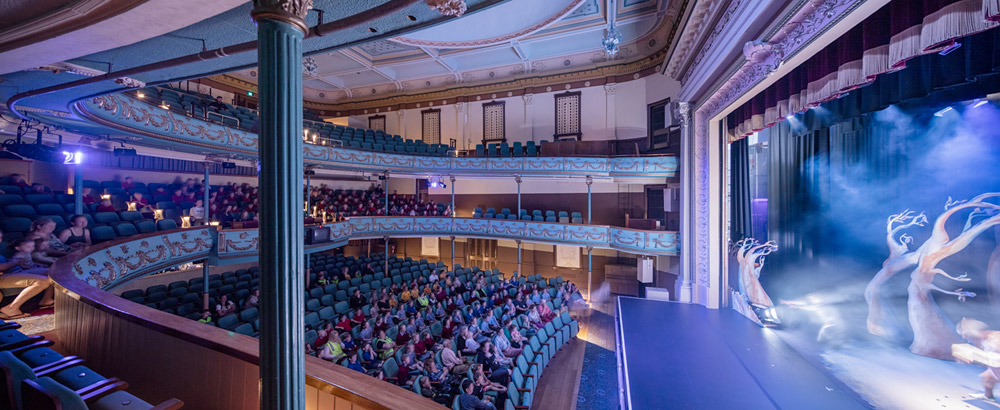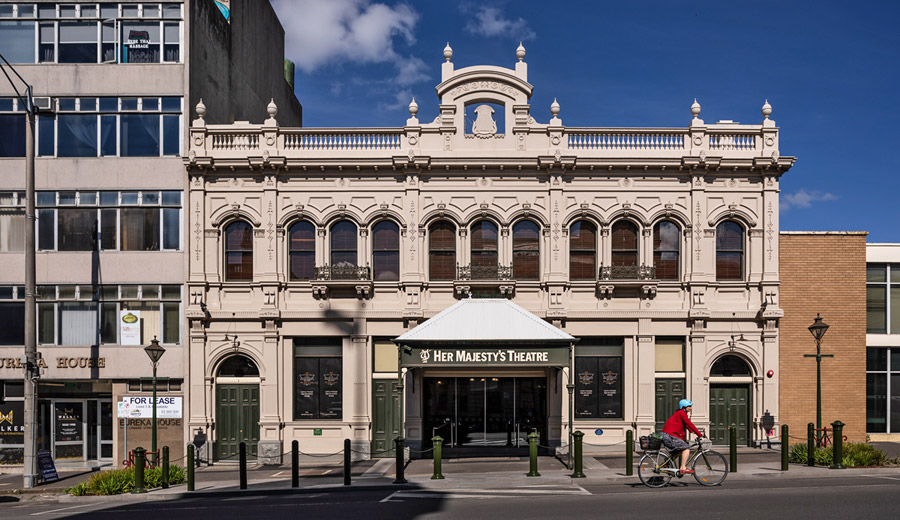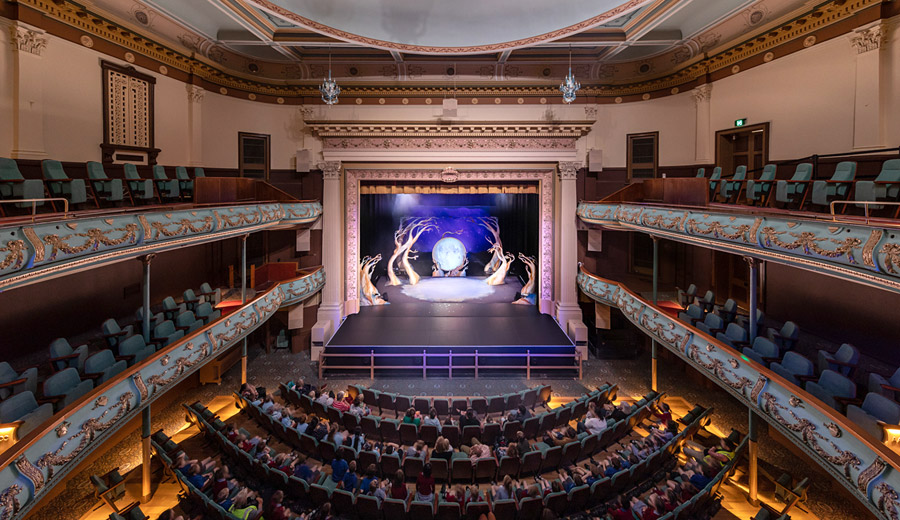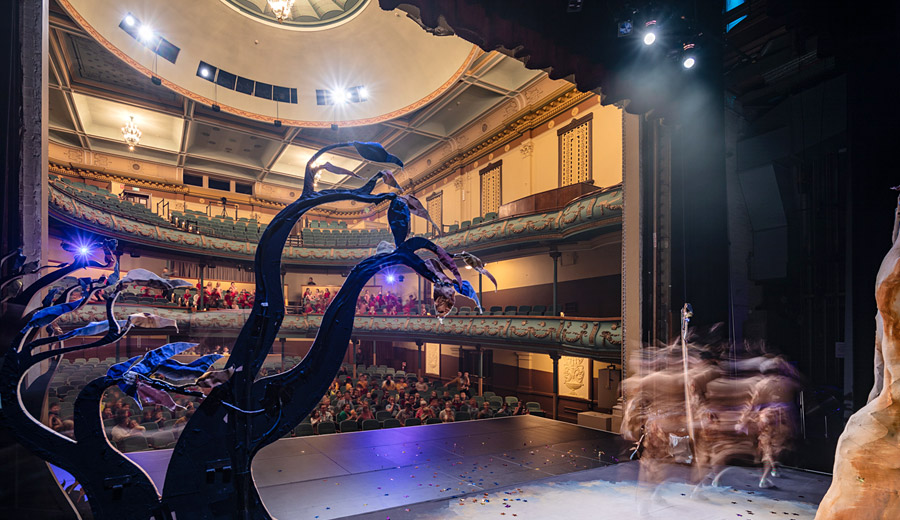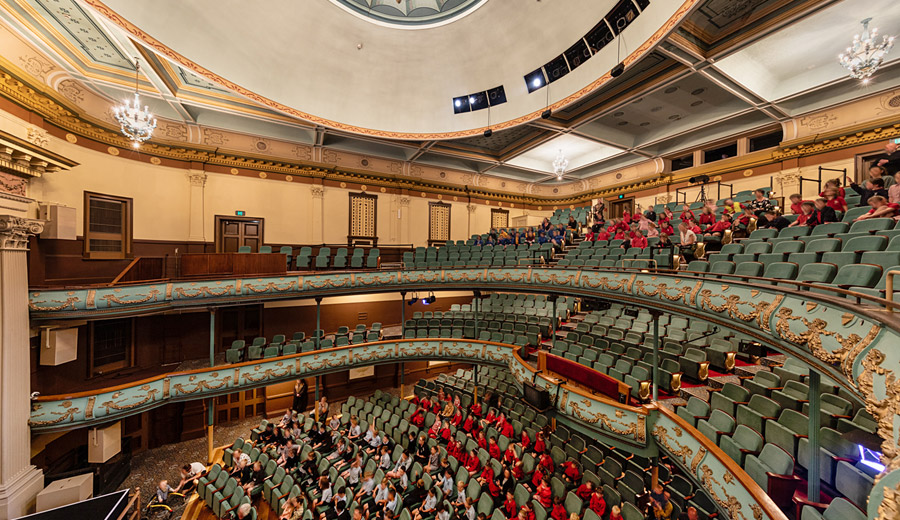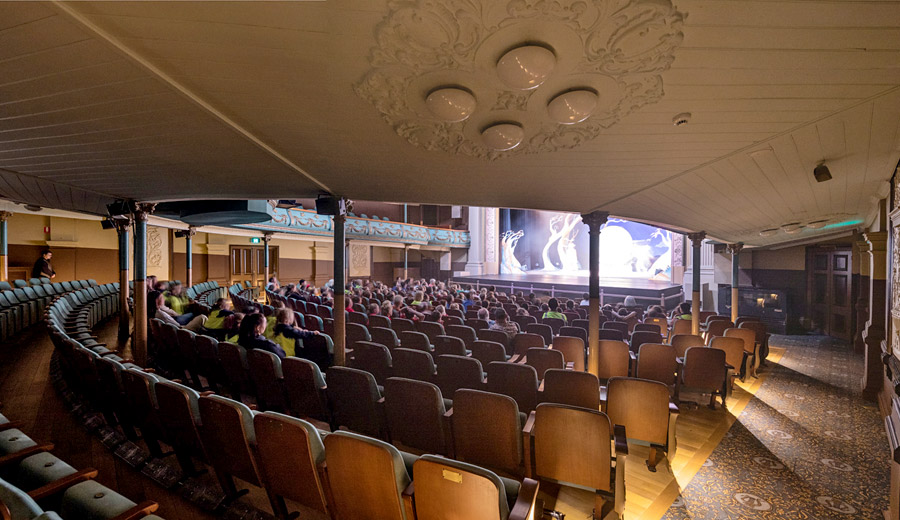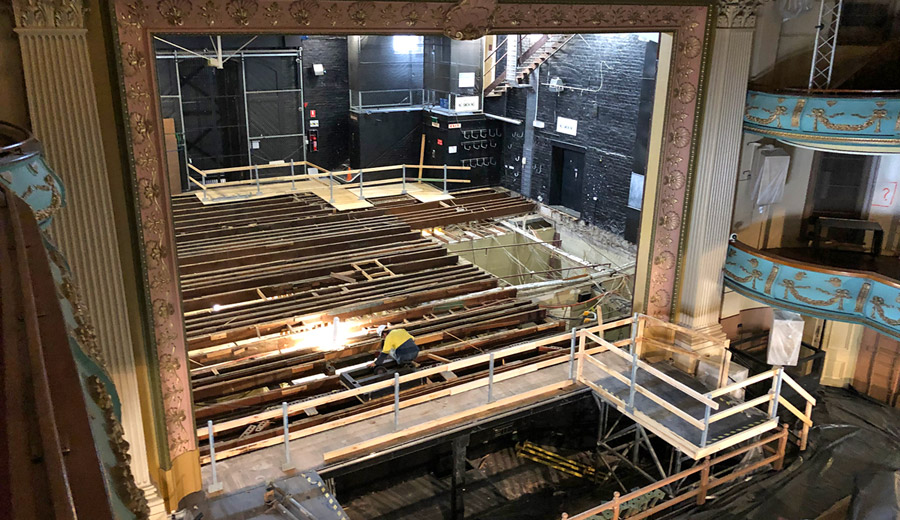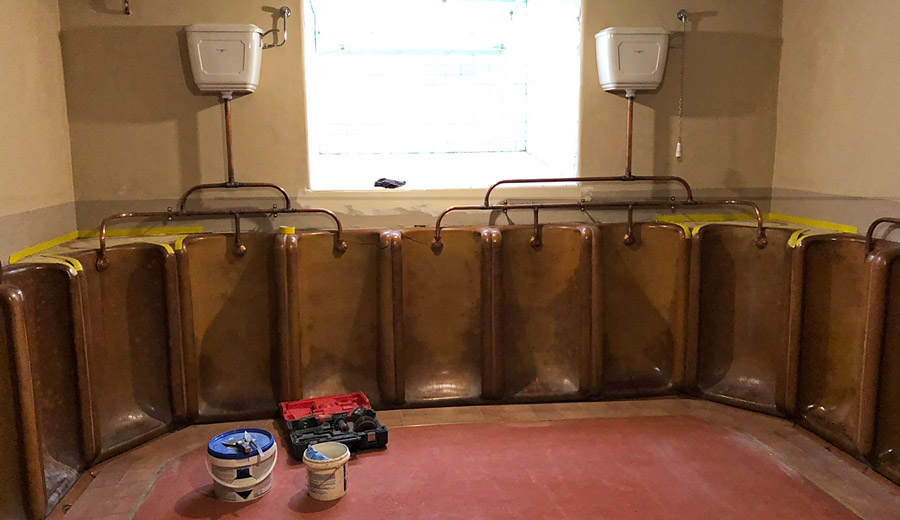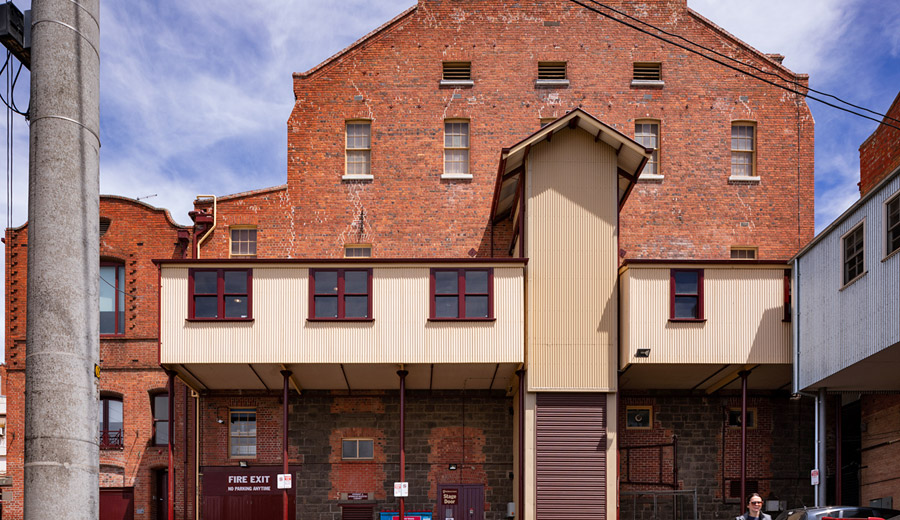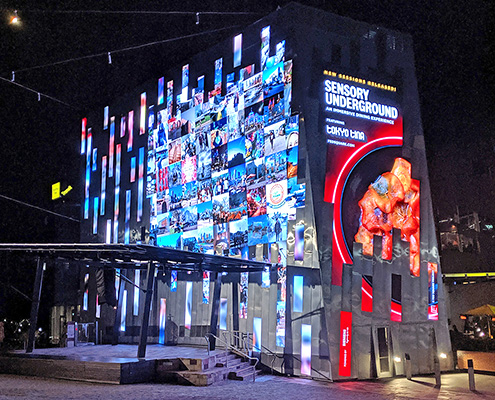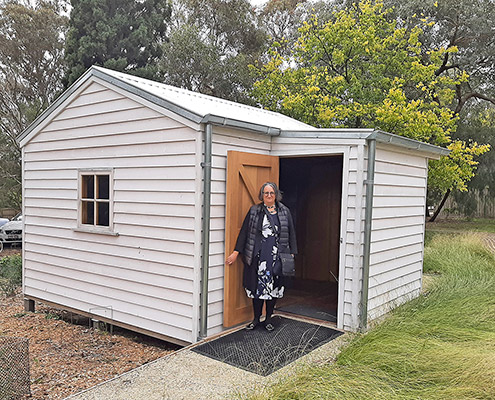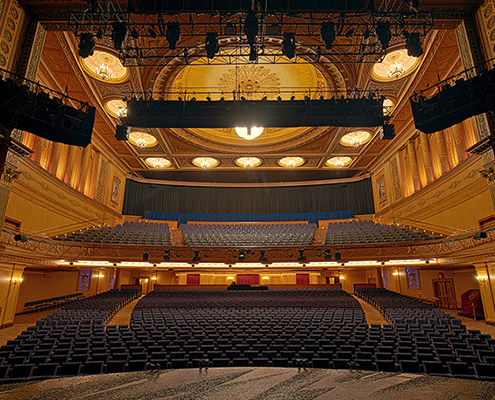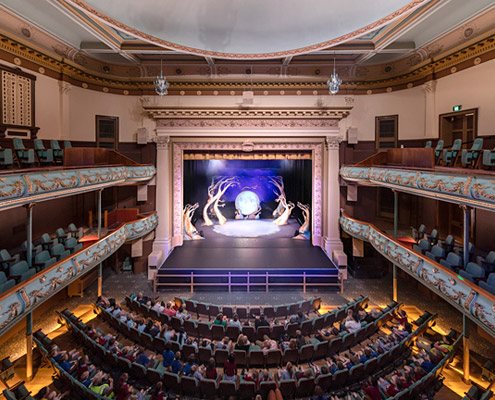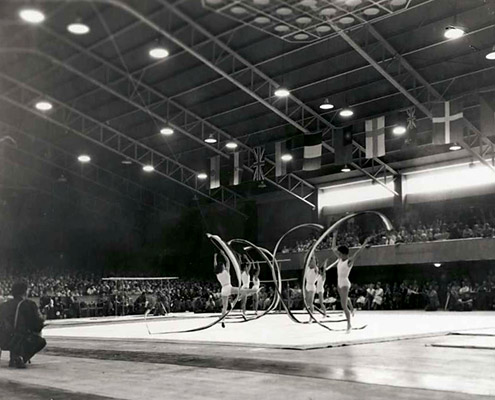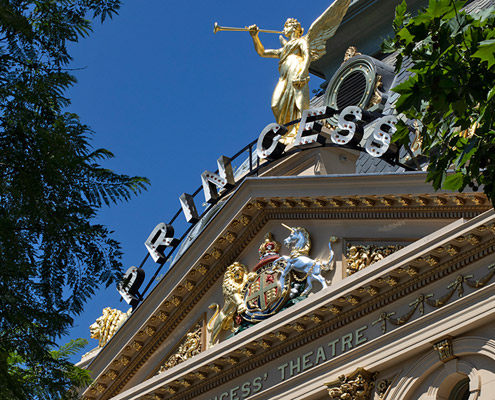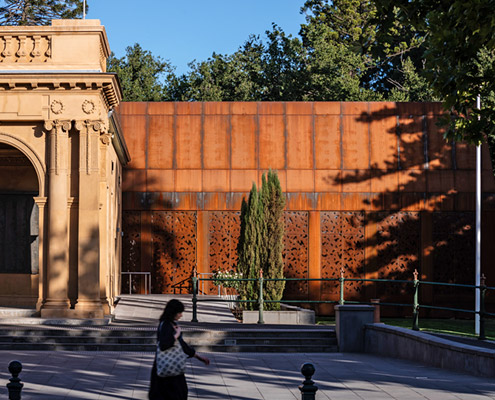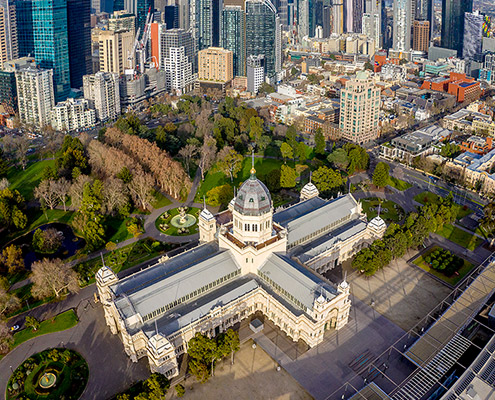
Client City of Ballarat and Her Majesty’s Theatre
In 2019, we completed conservation works in Ballarat at Her Majesty’s — considered the mainland’s oldest working theatre, and a rare survivor among a group of 19th century Goldfields theatres that rivalled those in the state capitals. We worked on the interior and exterior, focusing on remediation, auditorium conservation works, roof works, waterproofing, fire services and strengthening of the stage and the trusses over it. The works were partly funded by a $2m Living Heritage Grant through Heritage Victoria, and partly by current owner, the City of Ballarat. Further works are planned, based on a feasibility study produced in 2020 by Lovell Chen, that will concentrate on upgrades to back- and front-of-house facilities, replacement of building services and addressing various compliance issues.
Her Majesty’s has a very interesting auditorium, with double horseshoe-shaped balconies supported on columns. These are the last of their type remaining in Victoria. The building was constructed in 1874-5 to the design of noted architect George Browne, who also designed Rupertswood for the theatre’s patron, William J. Clarke. A second important architect, and one-time apprentice of Browne — William Pitt — made alterations in 1898, including the addition of a balcony to make the distinctive double-horseshoe auditorium format that survives today. It’s the last example in the state. Pitt’s other work includes Melbourne’s Princess Theatre. In Ballarat, the auditorium walls were stripped back in preparation for reinstatement of the 1898 scheme, the work of decorators C.S. Paterson Brothers of Little Collins Street, Melbourne.
The stage area was the subject of significant engineering interventions. The non-compliant stage substructure has been replaced, a new steel frame inserted and remedial work to strengthen the roof area undertaken. New columns and beams were threaded into the existing fabric, with no change to floor levels. Three large timber trusses span the stage. During the documentation phase, a major crack was found in one, and new steel trusses have been installed alongside the originals. The timber trusses support the roof, the steel ones support the fly tower and new stage equipment.
The works included attention to weatherproofing, such as gutter replacement. Above the theatre’s Long Room, an early copper internal gutter was matched like-for-like, correcting some of the detail to match the original. In the basement, remedial works to the brick north and south walls were undertaken, with removal of efflorescence and the injection of lime grout to reduce the impact of damp. The pavement lights that illuminate the basement have been restored.
An interesting heritage feature of the theatre is its row of 1930s terracotta urinals, which are still in use. Conservation works to them include the repair of cracks using pigmented epoxy to match the existing, the non-original concrete drain replaced in terracotta, and repair of the hydraulic flushing system.
The fabric of the building has been made good inside and out, with re-rendering, re-plastering and a myriad of minor repairs. To bring the fire services up to date, exit/emergency lighting and smoke detectors have been replaced, a new fire indicator board installed and a new fire door of sympathetic design added in the foyer.
Contractor Nicholson Construction won a 2020 Master Builders Victoria Excellence in Construction award for this project (commercial $5m-10m category).
The 2019 works were jointly funded by a grant from the Living Heritage Programme of the Department of Environment, Land, Water and Planning through Heritage Victoria, and the City of Ballarat.
Heritage data
constructed 1874-5, 1898
original architects George Browne, William Pitt
victorian heritage register H 0648
progress photos : Lovell Chen
completed photos : Trevor Mein

